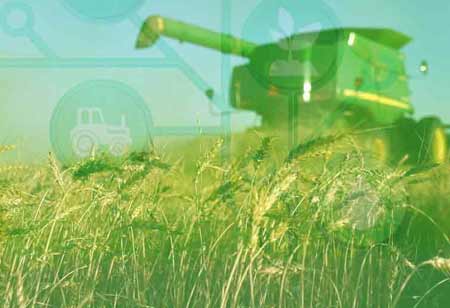Thank you for Subscribing to Agri Business Review Weekly Brief
Agricultural Nano Technology the future of Farming

By
Agri Business Review | Wednesday, July 28, 2021
Stay ahead of the industry with exclusive feature stories on the top companies, expert insights and the latest news delivered straight to your inbox. Subscribe today.
The agricultural sector is confronted with huge problems, including rapid climate changes, soil fertility diminishing, being macro and micronutrient insufficient, more use of chemical fertilizers and pesticides, and huge metal contamination of the soil.
FREMONT, CA: Farmers are unaware that the excessive use of pesticides has detrimental effects on agricultural farms since harmful agrochemicals pollute the surface and groundwater. Apart from that, the growing usage of chemical pesticides depletes the soil of useful bacteria, insects, and other species—the total effect is a significant environmental decline.
Nanoparticles Are Frequently Used in Agriculture
Numerous nanoparticles are commercially available for agriculture usage. The following are the frequently utilized nanoparticles :
Polymeric nanoparticles
Polymeric nanoparticles are used in agriculture to distribute agrochemicals slowly and accurately. Several advantages of polymeric nanoparticles are their greater biocompatibility and less toxicity to unintended organisms.
Polyethene glycol, poly(epsilon-caprolactone), and poly (-glutamic acid are some of the polymeric nanomaterials utilized generally in agriculture.
Silver nanoparticles
Silver nanoparticles are largely employed in antibacterial applications against various phytopathogens. Plus, scientists have shown that silver nanoparticles promote plant development and growth
Alumino-silicate nanoparticles
Numerous chemical manufacturers use nanoalumino-silicate compositions as an effective insecticide.
Titanium dioxide nanoparticles
These biocompatible nanoparticles are used to purify water.
Carbon nanomaterials
Carbon nanoparticles like graphene, graphene oxide, carbon dots, and fullerenes are utilized for better seed germination.
Zinc oxide, copper oxide nanoparticles, and magnetic nanoparticles are used in the agricultural sector.
Agricultural Nanotechnology for Crop Productivity development
Phytopesticides and phytopesticides are nano pesticides and phytopesticides.
Agricultural productivity has rapidly increased significantly due to nanoherbicides and nano pesticides to control weeds and pests. Formulations for nanoherbicides include a variety of nanoparticles, polymeric and inorganic nanoparticles.
Herbicides can be delivered in numerous effective ways, as scientists have discovered. For example, poly (epsilon-caprolactone) nanoparticles encapsulate the pesticide atrazine. This nanocapsule demonstrated effective management of the aimed species, reduced genotoxicity, and the capability to less atrazine mobility in the soil significantly.
Nanomaterials for disease treatment
Agriculture suffers enormous losses each year because of microbiological (virus, fungus, and bacteria) diseases.
Specific antimicrobial nanomaterials help in the prevention of microbiological infections. The most common pathogenic fungi responsible for the disease are Colletotrichum gloeosporioides, Fusarium oxysporum, and Dematophora necatrix.
Numerous nanoparticles, including nickel ferrite and copper nanoparticles, show significant antifungal activity and are useful in controlling crops disease. In addition, Chitosan nanoparticles, zinc oxide nanoparticles, and silica nanoparticles effectively remedy viral infections caused by tobacco mosaic virus, potato mosaic virus, and alfalfa mosaic virus.
Fertilizers nanoscale
Agricultural Scientists use nanotechnology to develop an intelligent delivery system that would slowly and accurately deliver nutrients to a particular venue, thereby addressing the nutrient deficiency in plants.
Nano fertilizers increase agricultural outcomes by increasing the availability of vital nutrients to the plant.
Millet and cluster bean yields were normally following the application of nano phosphors fertilizers in arid environments. However, Chitosan nanoparticle suspensions, including nitrogen, phosphorus, and salt, have enhanced crop growth and development.
See Also : 3PL Technology Solutions Companies





